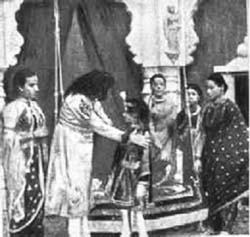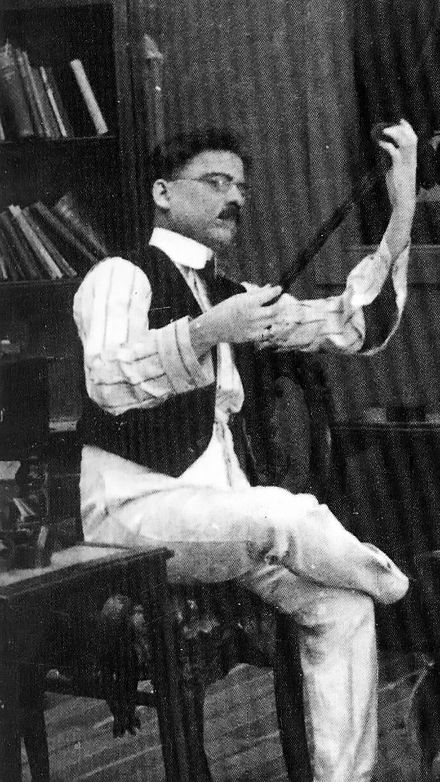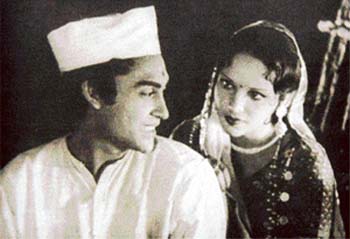Cinema of India:
The cinema of India consists of films produced across India, which includes the cinematic cultures ofAndhra Pradesh, Assam, Bihar, Gujarat,Haryana, Jammu and Kashmir,Jharkhand, Karnataka, Kerala,Maharashtra, Odisha, Punjab, Rajasthan,Tamil Nadu, Telangana, West Bengal, and Bollywood among others.[6] Indian films came to be followed throughoutSouthern Asia, the Greater Middle East,Southeast Asia, and the former Soviet Union. Cinema as a medium gained popularity in the country and as many as 1,600 films in various languages of Indiawere produced annually.[3][7] Dadasaheb Phalke is known as the father of Indian cinema.[8][9][10][11] The Dadasaheb Phalke Award, for lifetime contribution to cinema, was instituted in his honour, by the Government of India in 1969, and is the most prestigious and coveted award in Indian cinema.[12]
Quick facts: Indian Cinema, Number of screens ...
Close
In the 20th century, Indian cinema, along with the Hollywood and Chinese film industries, became a global enterprise.[13] As of 2013, in terms of annual film output, India ranks first, followed by Nollywood,[3][14] Hollywoodand China.[15] In 2012, India produced 1,602 feature films.[3] Indian film industry reached overall revenues of $1.86 billion (INR 93 billion) in 2011. This is projected to rise to $3 billion (INR 150 billion) in 2016.[16] Enhanced technology paved the way for upgrading from established cinematic norms of delivering product, altering the manner in which content reached the target audience. Visual effects based, super hero science fiction, and epic films likeBaahubali, Enthiran, Ra.One, Eega, andKrrish 3 emerged as blockbusters.[13]Indian cinema found markets in over 90 countries where films from India are screened.[17]
Directors such as Satyajit Ray, Ritwik Ghatak, Mrinal Sen, Adoor Gopalakrishnan, Buddhadeb Dasgupta,G. Aravindan, Aparna Sen, Shaji N. Karun, and Girish Kasaravalli have made significant contributions to Parallel Cinema and won global acclaim. Other filmmakers such as Shekhar Kapur, Mira Nair and Deepa Mehta have found success overseas.[18] The Indian government extended film delegations to foreign countries such as the United States of America and Japan while the country's Film Producers Guild sent similar missions through Europe.[19] The provision of 100% foreign direct investment has made the Indian film market attractive for foreign enterprises such as 20th Century Fox, Sony Pictures,Walt Disney Pictures[20][21] and Warner Bros..[22] Indian enterprises such asAVM Productions, Prasad's Group, Sun Pictures, PVP Cinemas, Zee, UTV,Suresh Productions, Eros Films,Ayngaran International, Pyramid Saimira, Aascar Films and Adlabs also participated in producing and distributing films.[22] Tax incentives to multiplexes have aided the multiplex boom in India.[22] By 2003 as many as 30 film production companies had been listed in the National Stock Exchange of India, making the commercial presence of the medium felt.[22]
The South Indian film industry defines the four film cultures of South India as a single entity. They are the Kannada, theMalayalam, the Tamil and the Teluguindustries. Although developed independently for a long period of time, gross exchange of film performers and technicians as well as globalisationhelped to shape this new identity. TheIndian diaspora consists of millions of Indians overseas for which films are made available both through mediums such as DVDs and by screening of films in their country of residence wherever commercially feasible.[23] These earnings, accounting for some 12% of the revenue generated by a mainstream film, contribute substantially to the overall revenue of Indian cinema, the net worth of which was found to be US$1.3 billion in 2000.[24] Music in Indian cinema is another substantial revenue generator, with the music rights alone accounting for 4–5% of the net revenues generated by a film in India.[24]
History

Advertisement in The Times of India of 25 May 1912 announcing the screening of the first feature film of India, Shree Pundalik by Dadasaheb Torne
Following the screening of the Lumièremoving pictures in London (1895) cinema became a sensation across Europe and by July 1896 the Lumière films had been in show in Bombay (nowMumbai).[25] In the next year a film presentation by one Professor Stevenson featured a stage show at Calcutta's Star Theatre. With Stevenson's encouragement and camera Hiralal Sen, an Indian photographer, made a film of scenes from that show, namely The Flower of Persia (1898).[26] The Wrestlers (1899) byH. S. Bhatavdekar showing a wrestling match at the Hanging Gardens in Mumbai was the first film ever to be shot by an Indian. It was also the first Indian documentary film.
The first Indian film released in India was Shree pundalik a silent film inMarathi by Dadasaheb Torne on 18 May 1912 at 'Coronation Cinematograph', Mumbai.[27][28] Some have argued thatPundalik does not deserve the honour of being called the first Indian film because it was a photographic recording of a popular Marathi play, and because the cameraman—a man named Johnson—was a British national and the film was processed in London.[29][30]

A scene from Raja Harishchandra (1913), first full-length Indian motion picture

AVM Studios in Chennai, India's oldest surviving film studio
The first full-length motion picture in India was produced by Dadasaheb Phalke, Dadasaheb is the pioneer of Indian film industry a scholar on India's languages and culture, who brought together elements from Sanskrit epics to produce his Raja Harishchandra (1913), a silent film in Marathi. The female roles in the film were played by male actors.[31]The film marked a historic benchmark in the film industry in India. Only one print of the film was made and shown at the Coronation Cinematograph on 3 May 1913. It was a commercial success and paved the way for more such films. The first silent film in Tamil, Keechaka Vadham was made by R. Nataraja Mudaliar in 1916.[32]
The first Indian chain of cinema theatres, Madan Theatre was owned by the parsi entrepreneur Jamshedji Framji Madan, who oversaw production of 10 films annually and distributed them throughout the Indian subcontinentstarting from 1902.[31] He foundedElphinstone Bioscope Company in Calcutta. Elphinstone merged intoMadan Theatres Limited in 1919 which brought many of Bengal's most popular literary works to the stage. He also produced Satyawadi Raja Harishchandra in 1917, a remake of Phalke's Raja Harishchandra (1913).
Raghupathi Venkaiah Naidu was an Indian artist and a pioneer in the production of silent Indian movies and talkies.[33] Starting from 1909, he was involved in many aspects of Indian cinema's history, like travelling to different regions in Asia, to promote film work. He was the first to build and own cinema halls in Madras. In South India, the first Tamil talkie Kalidas which released on 31 October 1931, barely 7 months after India's first talking pictureAlam Ara[34] Nataraja Mudaliar also established South India's first film studio in Madras.[35]
During the early twentieth century cinema as a medium gained popularity across India's population and its many economic sections.[25] Tickets were made affordable to the common man at a low price and for the financially capable additional comforts meant additional admission ticket price.[25]Audiences thronged to cinema halls as this affordable medium of entertainment was available for as low as an anna (4paisa) in Bombay.[25] The content of Indian commercial cinema was increasingly tailored to appeal to these masses.[25] Young Indian producers began to incorporate elements of India's social life and culture into cinema.[36]Others brought with them ideas from across the world.[36] This was also the time when global audiences and markets became aware of India's film industry.[36]

Publicity Photo of K. L. Saigal
In 1927, the British Government, to promote the market in India for British films over American ones, formed theIndian Cinematograph Enquiry Committee. The ICC consisted of three British and three Indians, led by T. Rangachari, a Madras lawyer.[37] This committee failed to support the desired recommendations of supporting British Film, instead recommending support for the fledgling Indian film industry. Their suggestions were shelved.
Ardeshir Irani released Alam Ara which was the first Indian talkie film, on 14 March 1931.[31] Irani later produced the first south Indian talkie film Kalidasdirected by H. M. Reddy released on 31 October 1931.[38][39] Jumai Shasthi was the first Bengali talkie. Following the inception of 'talkies' in India some film stars were highly sought after and earned comfortable incomes through acting.[31] Actor of the time, Chittor V. Nagaiah, was one of the first multilingual film actor, singer, music composer, producer and director's in India. He was known as the Paul Muni of India in the media.[40][41]
In 1933, East India Film Company has produced its first Indian film Savitri Shot in Calcutta on a budget of ₹ 75 thousand, based on a noted stage play by Mylavaram Bala Bharathi Samajam, the film was directed by C. Pullaiah casting stage actors Vemuri Gaggaiah andDasari Ramathilakam as Yama and Savithri, respectively.[42] The blockbuster film has received an honorary diploma atVenice Film Festival.[43] The first film studio in South India, Durga Cinetone was built in 1936 by Nidamarthi Surayya inRajahmundry, Andhra Pradesh.[44] As sound technology advanced, the 1930s saw the rise of music in Indian cinema with musicals such as Indra Sabha andDevi Devyani marking the beginning of song-and-dance in India's films.[31]Studios emerged across major cities such as Chennai, Kolkata, and Mumbai as film making became an established craft by 1935, exemplified by the success of Devdas, which had managed to enthrall audiences nationwide.[45]1940 film, Vishwa Mohini, is the first Indian film, depicting the Indian movie world. The film was directed by Y. V. Rao and scripted by Balijepalli Lakshmikanta Kavi.[46]
Swamikannu Vincent, who had built the first cinema of South India inCoimbatore, introduced the concept of "Tent Cinema" in which a tent was erected on a stretch of open land close to a town or village to screen the films. The first of its kind was established inMadras, called "Edison's Grand Cinemamegaphone". This was due to the fact that electric carbons were used for motion picture projectors.[47]Bombay Talkies came up in 1934 andPrabhat Studios in Pune had begun production of films meant for theMarathi language audience.[45]Filmmaker R. S. D. Choudhury producedWrath (1930), banned by the British Rajin India as it depicted actors as Indian leaders, an expression censored during the days of the Indian independence movement.[31] Sant Tukaram, a 1936 film based on the life of Tukaram (1608–50), a Varkari Sant and spiritual poet, was screened at the 1937 edition of Venice Film Festival and thus became the first Indian film to be screened at an international film festival. The film was subsequently adjudged as one of the three best films of the year in the World.[48] In 1938, Gudavalli Ramabrahmam, has co-produced and directed the social problem film, Raithu Bidda, which was banned by the British administration in the region, for depicting the uprise of the peasantry among the Zamindar's during the British raj.[49][50]
The Indian Masala film—a slang used for commercial films with song, dance, romance etc.—came up following the second world war.[45] South Indian cinema gained prominence throughout India with the release of S.S. Vasan'sChandralekha.[45] During the 1940s cinema in South India accounted for nearly half of India's cinema halls and cinema came to be viewed as an instrument of cultural revival.[45] Thepartition of India following its independence divided the nation's assets and a number of studios went to the newly formed Pakistan.[45] The strife of partition would become an enduring subject for film making during the decades that followed.[45]
After Indian independence the cinema of India was inquired by the S. K. Patil Commission.[51] S.K. Patil, head of the commission, viewed cinema in India as a 'combination of art, industry, and showmanship' while noting its commercial value.[51] Patil further recommended setting up of a Film Finance Corporation under the Ministry of Finance.[52] This advice was later taken up in 1960 and the institution came into being to provide financial support to talented filmmakers throughout India.[52] The Indian government had established a Films Division by 1948 which eventually became one of the largest documentary film producers in the world with an annual production of over 200 short documentaries, each released in 18 languages with 9000 prints for permanent film theatres across the country.[53]
The Indian People's Theatre Association(IPTA), an art movement with a communist inclination, began to take shape through the 1940s and the 1950s.[51] A number of realistic IPTA plays, such as Bijon Bhattacharya'sNabanna in 1944 (based on the tragedy of the Bengal famine of 1943), prepared the ground for the solidification of realism in Indian cinema, exemplified byKhwaja Ahmad Abbas's Dharti Ke Lal(Children of the Earth) in 1946.[51] The IPTA movement continued to emphasize on reality and went on to produce Mother India and Pyaasa, among India's most recognizable cinematic productions.[54]
Contd.



No comments:
Post a Comment